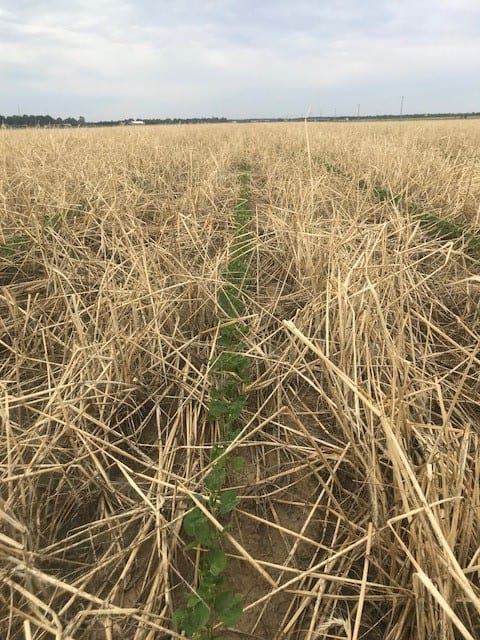USSEC Chairman Gives Updates throughout the Season. Part One: Planting
Derek farms soybeans, rice, corn, cotton, grain sorghum and wheat with his wife, Shannon, on their farm in Newport, Ark.
Soybean planting is well underway in most of the U.S., but in Newport, in the Mid-south where I farm, soybeans are about 90 percent planted and we plan to finish up this week.
For the most part, this planting timeline for my farm is typical; however not every year is the same. Last year, we didn’t start planting until May 15 because we had a massive flood. Waiting too late to plant can be a roll of the dice in the Mid-south, where it is hot and humid in the summer and timely rain is not always guaranteed. Where I farm, we must irrigate to supplement rainwater. We prefer to plant as early as possible and take the risk of a frost to get the beans in early because we do have irrigation and August in Arkansas can be brutally dry weather. We like to just let the beans dry down in August and harvest starting in September.
When it came time to decide what to plant this year, I usually try to sell about 10-15 percent of what I think I will have in increments. The last time I sold beans, it actually convinced me to plant more beans this year because I got a better price for them than other crops.
This year, a big focus on our farm is to prevent damage from root knot nematodes, which are small plant-parasites common in the Mid-south. Where I am in Arkansas, we also have a major problem with Palmer amaranth, which is an invasive weed species that is resistant to some herbicides, so I combat this by keeping a pretty strict rotation with rice, herbicide-tolerant soybeans and corn in the mix in order to introduce new species and new herbicides to fight the weed. I also try new soybean varieties every year. We do two test plots every year and plant side-by-side comparison, which is all planted and handled by me. We have tried all kinds of things on our farm. You learn a little more each year. I already know what soybean variety technology I plan to use next year.
What I must be on top of more than anything is weed control, that’s my number one priority. However, overall, we want to provide a safe, reliable, sustainable soybean crop to our end users. Sustainability practices have now just become another part of our process here on the farm. I spend $35 an acre on sustainability, planting cover crops and cereal rye to protect our land. My family has been farming this land since 1955, and I hope my sons will one day want to come back and farm this land, too. To us, sustainability isn’t romantic, it’s just something that we do now as we have seen the results of these sustainable practices. It’s not something we plan or address we just do it to protect our investment and to continually build up our land. It’s just like irrigating or running harvesters – we just practice farming sustainably.
Our next steps for the growing season are to start focusing on irrigation plans. I use Polypipe with furrow irrigation on my farm, which is an irrigation technique where a hose-like pipe is laid across a field with calculated holes in it to ensure water adequately and efficiently reaches all parts of a field through trenches in-between crop rows. We try to use as little water as possible with the best results and we use a lot of software to monitor this. I spend more time on irrigation than I do on planting and harvesting combined, so the next few weeks will be very busy for me.

Stay tuned for another update from Haigwood in a few weeks.
